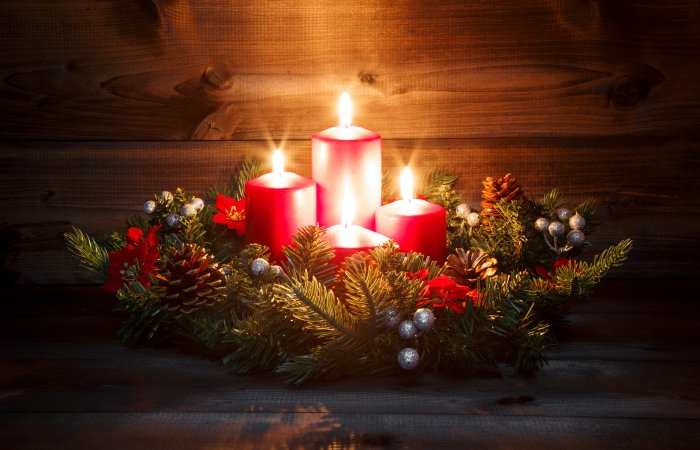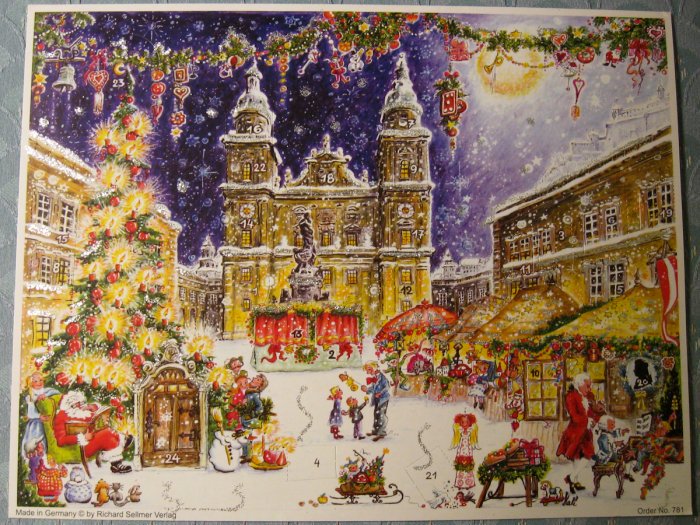Ellen Lloyd – AncientPages.com – Advent is a Christian season celebration that begins on the 4th Sunday before Christmas. In 2023, Advent begins on Sunday, December 3rd, and ends on Sunday, December 24th. The period covers four Sundays.
The candles in the Advent wreath are lit every night during Advent. The first candle is lit the first week, then an additional candle for each successive week.

Credit: Adobe Stock – reeel
Early History Of Advent
The word “Advent” is derived from the Latin word adventus, meaning “coming,” which is a translation of the Greek word parousia.
Historical records show little connection between Advent and Christmas at the beginning.
Advent has been observed since the fourth century. Initially, it was when converts to Christianity readied themselves for baptism.

Advent calendars are also part of the Advent tradition. Credit: Richard Sellmer Verlag
During the 4th and 5th centuries in Spain and Gaul, Advent was a season of preparation for the baptism of new Christians at the January feast of Epiphany, the celebration of God’s incarnation represented by the visit of the Magi to the baby Jesus, his baptism in the Jordan River by John the Baptist, and his first miracle at Cana.
During this period, Christians spent 40 days in penance, prayer, and fasting to prepare for this celebration.
By the 6th century, however, Roman Christians tied Advent to the coming of Jesus Christ. The Advent season was not explicitly linked to Christ’s first coming at Christmas until the Middle Ages.
What Do The Candles In Our Advent Wreath Mean?
Advent celebrations and traditions can vary from place to place, influenced by culture. However, some practices have come to be shared throughout the Catholic Church.
The best-known of all Advent symbols is the Advent wreath. Many families have a wreath in the home, light candles each Sunday, and say Advent prayers together.
The use of an Advent wreath is a custom that originated in Germany in the 16th century, in the time of the Protestant reformer Martin Luther.
Catholics soon adopted the custom. The evergreen wreath consists of four candles.
The four-candle wreath can be found in Christian homes and churches. There are different interpretations of the symbolic meaning behind the candles.
According to some sources, the candles represent the four virtues Jesus brings us: Hope, Love, Joy, and Peace. Others consider the lighting of the first candle to symbolize expectation, while the second symbolizes hope, the third joy, and the fourth purity.
Sometimes, a fifth candle is placed inside the Advent wreath. This candle is lit on Christmas Day. It is white, the color ᴀssociated with angels and the birth of Jesus. The colors of the candles are all white, blue, purple, or red.
The Advent wreath is beautiful but has a deeper meaning than just decorating and illuminating a Christian home. It is a Christian religious symbol of ongoing life.
Advent calendars and the Jesse tree are other popular Advent traditions.
First version of this article was published on November 30, 2020
Written by Ellen Lloyd – AncientPages.com
Copyright © AncientPages.com All rights reserved. This material may not be published, broadcast, rewritten or redistributed in whole or part without the express written permission of AncientPages.com
Expand for references
Aquinas and More Catholic Good
Christianity





